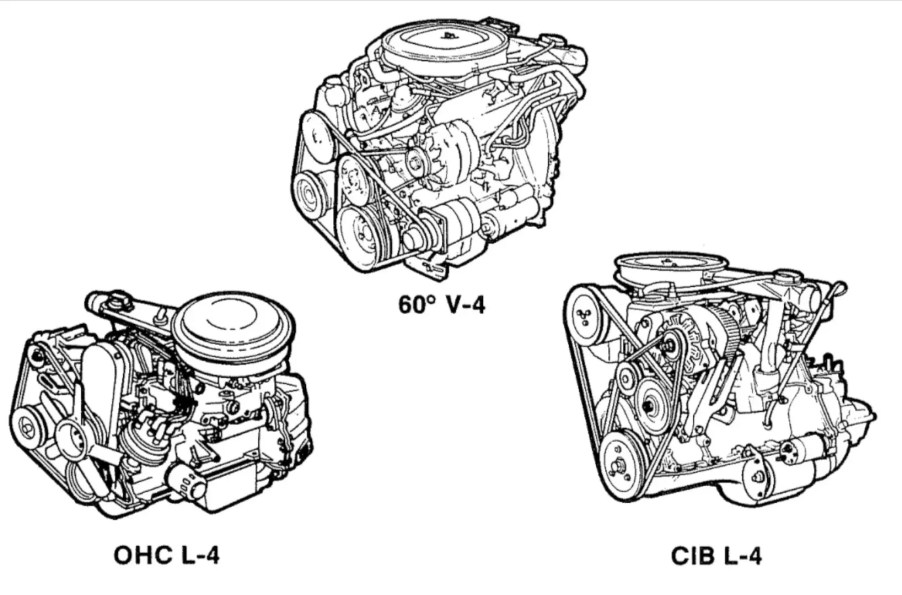
Are There Cars With a V4 Engine?
V4? Unless you are a proper car nerd, you might have never heard of cars with a V4 engine. We are well aware of inline four-cylinders, inline sixes, V6s, V8s, V10s, and V12s. You might have even heard of the W16 that Bugatti Bolide uses. However, V4s are rarer than hen’s teeth. There are a few cars out there that had them, but not many. This is weird, especially when you learn that GM planned an entire line of cars on the V4 engine in the ‘80s, but it never took off. So what’s going on with V4 engines? Are there still any cars with a V4?
What cars have a V4 engine?

While rare, V4 engines have been used a few times in the past. Ever heard of the rare Saab Sonnet? Again, only the nerds will know this one. It was fairly unpopular in its time, and it had V4. Some other oddballs that got a V4 engine come from Lancia, Ford, other Saab models, and even the 2014 Porsche 919 Hybrid LeMans car. There is also a nearly-forgotten Mid-Engine Mustang concept that was originally powered with a V4.
GM even built an entire line on three different V4s. The engines never worked out for GM, though. Let’s see why.
Why are V4 engines so uncommon?
As we mentioned, GM planned the entire J Car line based on three different four-cylinder engines to try. As the YouTube Channel Rare Classic Cars & Automotive History explains, GM made a pushrod inline-four, an overhead-cam inline-four, and a 60-degree V4 design. Why would GM abandon all that R&D?
The V4 had some issues. One of the early advantages of the V4 over the inline engines was that it was very short. Because the J Cars’ dimensions were already set, the engine had to fit the space that already existed. The V4’s shortness was a boon. However, while it was the shortest engine of the three, it was also the widest. This meant all the engine accessories had to be mounted on the front, which then negated its length advantage.
Ultimately, the pushrod inline-four won out for the J Cars. The reasons for this are simple; 1) Space. 2) Fuel efficiency. 3) Cheaper to build. The V4 was killed by GM for practicality’s sake. The V4’s width made packaging difficult. Also, due to its two cylinder banks, it needed two exhaust manifolds, two valvetrains, and two cylinder heads. It was just more complicated and, in turn, more expensive.
As a fun additional note; do you remember that 919 Porsche Hybrid V4? Neel Jani was one of the testers who put the 919 through its paces. According to Car Magazine, he said the 919’s V4 created so much vibration at higher RPM that it made it hard for him to see and even breathe. Porsche eventually did fix the issue by changing the firing order. However, the point still stands, V4s are tough to balance, given how short the block is.
Could the V4 come back?

V4s simply aren’t the best approach to building efficient, fast, and safe engines. The fact that it has been tried as many times as it has is proof that it might just not be the best idea. Then again, as hybrid technology continues to advance, maybe the V4 can find its place.





